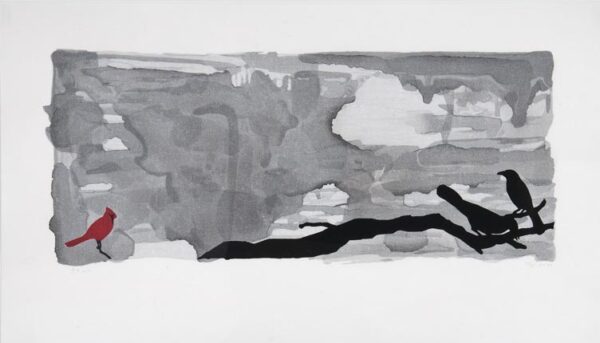Robert Moskowitz (1935-2024) was known for his work that connected Abstract Expressionism, Pop Art, and Minimalism. Curator Ned Rifkin described Moskowitz’s art as a “significant link between the Abstract Expressionism of the New York School and the New Image Abstraction painters of the mid-1970s.” Rifkin explained, “Moskowitz has polarized these ideas, pulling them sufficiently apart so that each has overlapped the other, fused again in an original visual language that he has successfully employed to express his inner-most feelings and define his insights about creativity, vitality, and the ever-unknown realm of the imagination.”
Moskowitz was born in 1935 and grew up in Brooklyn. His father abandoned the family when Moskowitz was eighteen; his mother subsequently moved to Florida for work, leaving Moskowitz to raise his younger sister. He attended night classes at the Pratt Institute of Art in Brooklyn, and his painting teacher, Adolph Gottlieb, a first generation Abstract Expressionist, pushed him to think abstractly. In 1959, Moskowitz traveled to Europe and met Gwyther Irwin, a British abstract artist, who told him about an artists’ community outside London. Moskowitz moved to the community and began creating collages in response to a fascination with the work of Marcel Duchamp.
In 1960, Moskowitz returned from England to live in New York. Two years later, he had his first sold-out solo exhibition at Leo Castelli Gallery. His work was also shown in the group exhibition Art of Assemblage at the Museum of Modern Art. In 1964, Moskowitz married fellow painter Hermine Ford, the daughter of abstract expressionist Jack Tworkov, and Tworkov became a father-figure and mentor for Moskowitz. “He had his own ideas about abstract art that were different from mine,” Moskowitz wrote. “Even though I was no longer working abstractly at that point, he helped me understand what I was doing. When people look at my work, I want them just to discover it in a quiet way—not unlike when you’re walking down the street and see something and then realize it’s just there, in a very physical or literal way. I think what really first attracted me to art—and wanting to become an artist—was the pure physicality of it.”
Robert Moskowitz’s first solo museum exhibition was held in 1971 at the Massachusetts Institute of Technology’s Hayden Gallery in Cambridge. He was awarded an artist’s fellowship by a peer review panel of the National Endowment for the Arts in 1975. He had solo exhibitions presented at the Hirshhorn Museum and Sculpture Gallery, Washington, D.C.; The Museum of Modern Art, New York; and the Walker Art Center, Minneapolis. He died in 2024 at the age of 88.
-Carleigh Koger

